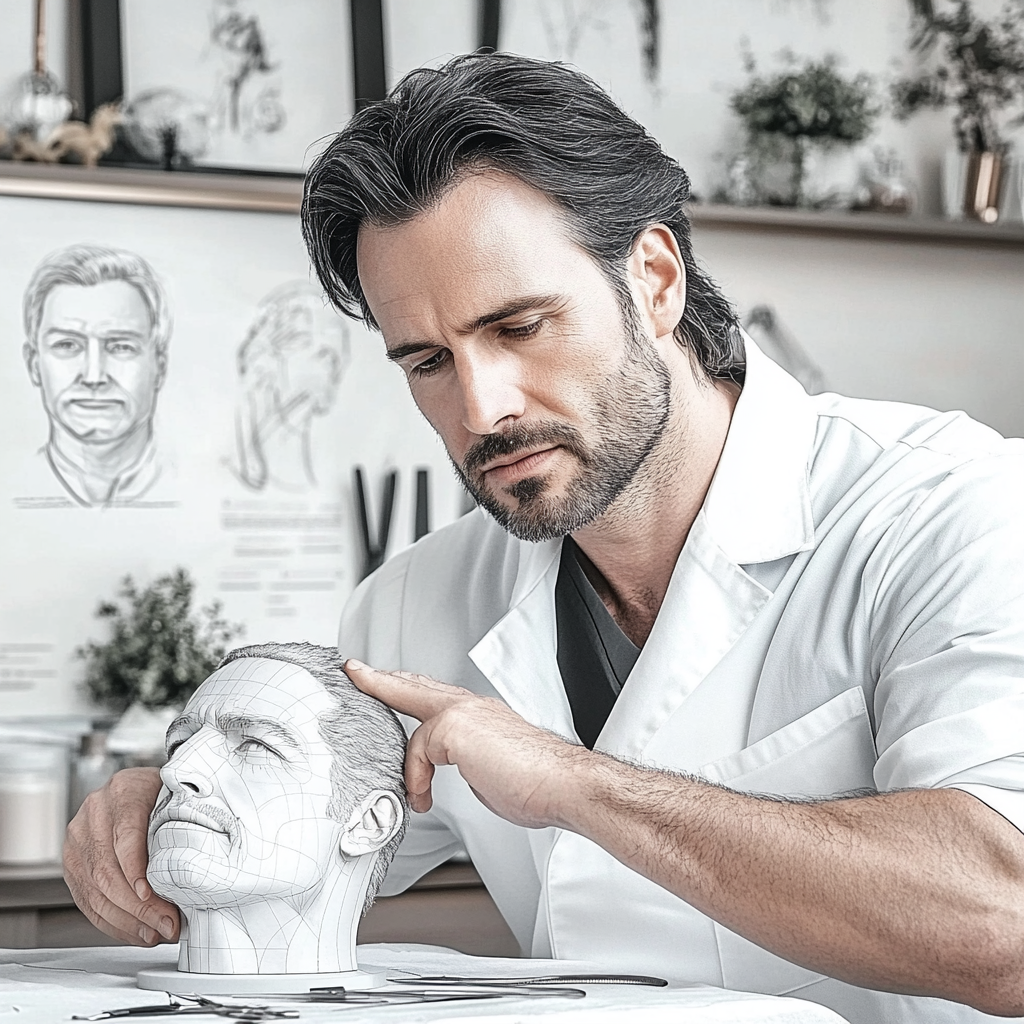Ptosis Correction: Surgical Techniques for Lifting Aged Soft Tissues
As we age, our faces inevitably change, which can significantly affect how we perceive our appearance and, consequently, our self-confidence. Ptosis, or age-related sagging of the soft tissues, becomes a relevant topic for many women who seek to preserve the youthfulness and freshness of their faces. This issue not only influences aesthetic perception but can also restrict the field of vision, making surgical ptosis correction vital for many. Modern plastic surgery offers a variety of techniques that effectively address ptosis, and each method requires an individualized approach.
Causes and Features of Upper Eyelid Ptosis
Upper eyelid ptosis is the most common age-related change. It arises from the weakening of the muscle-aponeurotic system and stretching of the skin. It is important to understand that ptosis can be either congenital (present at birth) or acquired. Each case requires attention to its specifics, as the severity of ptosis can vary from mild to severe. For example, congenital ptosis is linked to hereditary factors, while acquired forms can be age-related, neurogenic (related to nerve issues), myogenic (related to muscle), aponeurotic (related to the connective tissue), or mechanical.
When assessing the degree of ptosis from an aesthetic standpoint, it is crucial to pay attention to the distance from the edge of the upper eyelid to the center of the pupil. In this context, modern surgical ptosis correction becomes a necessary tool for achieving a natural and harmonious result.
Surgical Techniques for Correcting Upper Eyelid Ptosis
Modern aesthetic medicine offers various methods for correcting upper eyelid ptosis. Each method has its indications and limitations, so the choice of technique depends on various factors, including the severity of ptosis and the individual anatomical features of the patient.
Levator Resection Method is one of the primary approaches to treating upper eyelid ptosis. It involves excising a portion of the levator muscle (the muscle that lifts the upper eyelid) and significantly improves the functional capabilities of the eyelid. The incision is made along the natural fold of the eyelid, minimizing the visibility of scars and allowing for both functional and aesthetic results.
Another interesting approach is Levator Duplication. This technique shortens the levator muscle without resorting to tissue resection. Preserving the integrity of the muscle structures makes this technique particularly appealing for patients with anatomical features that require a delicate approach.
In cases of severe ptosis, Upper Eyelid Slinging is applied, which compensates for the diminished function of the levator through the activity of the frontal muscle. This method not only improves the functional capabilities of the eye but also visually enhances the attractiveness of the upper eyelid.
An innovative approach to correcting upper eyelid ptosis involves using suspension sutures and a special solution to achieve a symmetrical result. This method ensures precise control over the volume of excised tissues, which is very important for a natural and harmonious outcome.
Correction of Ptosis in the Mid and Lower Face
Age-related changes affect not only the upper third of the face but also the mid and lower zones. Ptosis in these areas is manifested by the deepening of the nasolabial folds, the formation of "marionette lines," and a loss of jawline definition. In this context, surgical ptosis correction is not just an aesthetic procedure but also an important step towards maintaining health and quality of life.
Modern techniques for correcting the face's contour are based on individualized approaches and zoning. For example, the use of botulinum toxin type A can effectively address initial and moderate ptosis. Each case requires special careful consideration of dosage and injection zones to achieve the maximum effect and harmony.
Minimally Invasive Techniques for Ptosis Correction
In addition to surgical methods, it is essential not to overlook minimally invasive procedures that can also significantly impact the fight against age-related changes. Lipofilling, biorevitalization, bio-reinforcement, and mesotherapy—these methods aim to restore volume and improve skin condition.
Lipofilling, for instance, allows for using the patient's own fat as a filler, making the procedure less traumatic and more natural. Biorevitalization and mesotherapy provide additional skin support by activating the production of collagen and elastin. These procedures can be used either alone or in combination with surgical methods to achieve the best results.
Conclusion
Ptosis correction is not only a relevant procedure but also a necessary one for many women who wish to maintain the youthfulness and attractiveness of their faces. The variety of modern techniques enables surgeons to adapt to each patient's individual characteristics and offer optimal solutions. It is essential to remember that consulting experienced specialists with a deep understanding of anatomy and an artistic vision can help achieve a natural and harmonious result, contributing not only to improving appearance but also to enhancing self-confidence. Modern approaches in plastic surgery successfully address age-related changes, improving not only appearance but also overall quality of life.
Do you want to keep up to date with the latest news about plastic surgery? Subscribe to my Telegram channel: https://t.me/By_Staisupov_ENG
Do you like to watch videos? More useful information is available here (the channel is in Russian, but you can always turn on auto-titles): https://www.youtube.com/@staisupov
All the results of plastic surgery can be found here: https://staisupov.com/results





